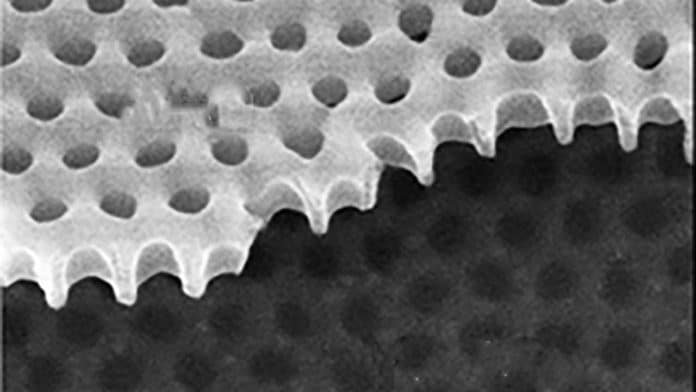Cooper pair: a pair of electrons in a superconductor that are attractively bound and have equal and opposite momentum and spin. Until now, scientists used to believe that cooper pair were two-trick ponies. Many theories have suggested that the pairs either glide freely, creating a superconducting state, or create an insulating state by jamming up within a material, unable to move at all.
But a new study has revealed a new property of the Cooper pair. The study has suggested that the Cooper pairs are good conductor, meanwhile the pairs can conduct electricity with some amount of resistance, like regular metals do.
The discovery presents a new state of matter, that will require a new theoretical explanation.
Jim Valles, a professor of physics at Brown University and the study’s corresponding author said, “There had been evidence that this metallic state would arise in thin film superconductors as they were cooled down toward their superconducting temperature, but whether or not that state involved Cooper pairs was an open question.”
“We’ve developed a technique that enables us to test that question and we showed that, indeed, Cooper pairs are responsible for transporting charge in this metallic state. What’s interesting is that no one is quite sure at a fundamental level how they do that, so this finding will require some more theoretical and experimental work to understand exactly what’s happening.”
In condensed matter physics, a Cooper pair or BCS pair is a pair of electrons (or different fermions) bound together at low temperatures in a specific way originally depicted in 1956 by American physicist Leon Cooper. Cooper showed that an arbitrary small attraction between electrons in a metal can cause a paired state of electrons to have a lower energy than the Fermi energy, which implies that the pair is bound.
As proposed in BCS theory, the Cooper pair state is responsible for superconductivity. Scientists even won Nobel Prize in 1972 for their work.
Resistance is created when electrons rattle around in the atomic lattice of a material as they move. But when electrons join together to become Cooper pairs, they undergo a remarkable transformation.
Electrons acts as fermions. Cooper pairs, however, act like bosons, which can happily share the same state. That bosonic behavior allows Cooper pairs to coordinate their movements with other sets of Cooper pairs in a way the reduces resistance to zero.
What’s more, Cooper pair also generates insulating states as well as superconductivity. They conspire to stay in place, stranded on tiny islands within a material and unable to jump to the next island.
In a new study, scientists observed the Cooper pairs in the non-superconducting metallic state using a technique similar to the one that revealed Cooper pair insulators. The technique involves patterning a thin-film superconductor — in this case a high-temperature superconductor yttrium barium copper oxide (YBCO) — with arrays of tiny holes. When the material has a current running through it and is exposed to a magnetic field, charge carriers in the material will orbit the holes like water circling a drain.
Valles said, “We can measure the frequency at which these charges circle. In this case, we found that the frequency is consistent with there being two electrons going around at a time instead of just one. So we can conclude that the charge carriers in this state are Cooper pairs and not single electrons.”
Scientists noted, “The idea that boson-like Cooper pairs are responsible for this metallic state is something of a surprise. because there are elements of quantum theory that suggest this shouldn’t be possible. So, understanding just what is happening in this state could lead to some exciting new physics, but more research will be required.”
“Luckily, the fact that this phenomenon was detected in a high-temperature superconductor will make future research more practical. YBCO starts superconducting at around -181 degrees Celsius, and the metallic phase starts at temperatures just above that. That’s pretty cold, but it’s much warmer than other superconductors, which are active at just above absolute zero. That higher temperature makes it easier to use spectroscopy and other techniques aimed at better understand what’s happening in this metallic phase.”
“Down the road, the researchers say, it might be possible to harness this bosonic metal state for new types of electronic devices.”
Valles said, “The thing about the bosons is that they tend to be in more of a wavelike state than electrons, so we talk about them having a phase and creating interference in much the same way light does. So there might be new modalities for moving charge around in devices by playing with interference between bosons.”
